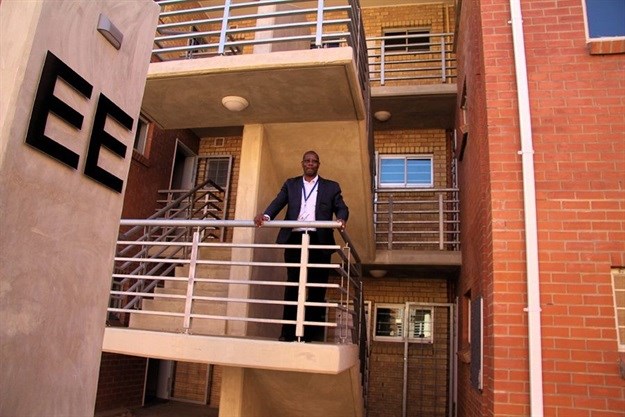
Accelerating infrastructure development is one of the university's six strategic priorities for the period 2016–2021.
"Investment in post-secondary infrastructure is an investment in South Africa’s next generation of students and researchers. Improving the spaces where students live and where innovation takes place will fuel prosperity for years to come," explains University of Zululand vice chancellor Professor Xoliswa Mtose.
Director of facilities management Richard Dlongolo says that the completion of additional residential accommodation for 288 students was a precursor to building further residences on the campus to address the critical shortage of student accommodation.
At present, 5,000 out of 17,000 students can be accommodated on campus. Unlike many tertiary institutions which are located in busy cities, the University of Zululand is 19km south of Empangeni and 142km from Durban and there is limited alternative accommodation.
As a result, many young people travel long distances or live in the nearby Vulindlela Village where rudimentary housing and shacks lack basic services and do not provide a suitable environment for study, he points out.
Dlongolo says that the latest residential additions are actually an extension of facilities that were completed in 2008. This project officially began in November 2015. Construction of the new residences took a year. They were ready by May this year and students took occupation in July.
Dlongolo said that the second project – the rebuilding of the campus electricity substation at a cost of around R26m – addressed the protracted electricity outages that had plagued the university. Because the campus is in a remote area and was established during the 1960s, it was not included on the municipal grid. It therefore required its own high voltage electricity substation. At 35 years old and technically obsolete, this was “past its sell by date”.
He says the climate promotes corrosion which, when coupled with poor maintenance over the years, meant that the old transformers were beyond repair.
As a result, the university had relied on a single transformer for two years. There was always “a high risk of failure and a strong likelihood that this would have a negative impact on the university” as, without any backup, the electricity supply could only be restored once repairs were done.
As a result, electricity outages that stretched for days at a time had become a major problem. This impacted on laboratories and IT facilities and made teaching and learning difficult in Zululand where air conditioning is a must in the hot summers.
The rebuilding of the substation started at the beginning of 2015. The completed facility and the control centre, which is housed in the shell of the original control room building, has been built to international standards. Modern hybrid technology delivered a compact installation that requires minimal maintenance. It can be remotely controlled and supervised and is said to be extremely operator friendly.
Dlongolo says that the new facility has additional spare capacity for another 20-25 years and will easily accommodate the expansion of the university. The replacement of the old 6MW transformers with 10MW versions has resulted in a 40% increase in capacity. The high voltage switch gear is central to the integrity of the new system.
“But the biggest challenge was rehabilitating the substation while keeping it live,” Dlongolo says. He adds that security around the substation has been beefed up with CCTV cameras to help combat cable theft. A new fence also deters monkeys.
Dlongolo says that, as part of the substation upgrade, 5km of aged high voltage cables were also replaced. Ducting that will accommodate a potential installation of micro optic cable was included, eliminating the need for expensive retrenching and in turn reducing the cost of the future project.
The University of Zululand is also in the throes of improving energy usage on campus and has recently completed the specifications for the replacement of all street lighting. This will utilise LED technology and will both improve aesthetics and safety whilst also eliminating light pollution and bringing down electricity costs.